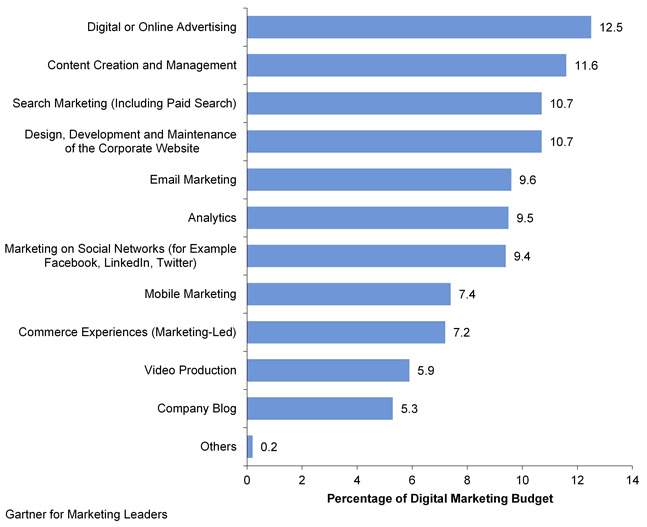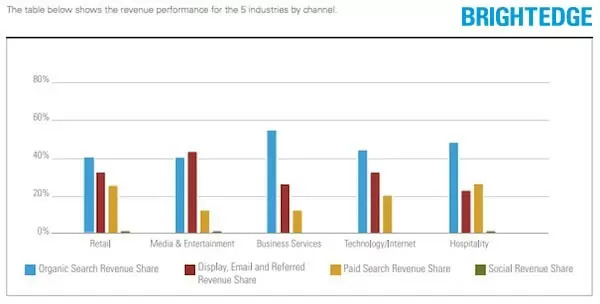All marketing channels need content and each channel has its own unique set of practices that help with building an audience.
The explosion of content as a driver of marketing success has left its mark already. Back in 2013, Gartner stated that content creation and management comprised the second largest share of digital marketing budgets – and that was years ago.

The organic search channel in particular is one that shouldn’t be overlooked. In a 2014 study by BrightEdge, we found that the organic search channel was the highest driver of traffic and revenue for a majority of the sectors studied. You can read more here.

When building an audience in organic search, how can you use content to help drive organic traffic and revenue for your brand? Let’s look at the three best practices for building an audience:
- Target your audience's demand
- Optimize content to help your audience find it
- Measure content so you know what resonates
1. Target Your Audience’s Demand. Sure, you can guess what content your target audience wants to consume, but with all the tools we have at our disposal today, why would you?
An informed organic content strategy starts with first understanding what topics your audience is searching for in search engines like Google. This is so you can create the content you want to be found for a searcher’s query – thus building an audience.
In order to start, you need to establish a couple things:
- Find and use a Web analytics platform that can help you find those topics that your audience is searching for.
- Understand how different content can perform in the search results, for example, video versus text to determine your content’s format (see this research we did on how video fares in the search results).
2. Optimize Content to Help Your Audience Find It. Once you’ve targeted the topics your audience wants to consume and have created the content, you need to optimize it for the search engines so your audience can more easily find it online.
Optimization can mean different things to different SEO professionals – everything from basic on-page tactics for Web pages to implementing schema and beyond.
BrightEdge CEO Jim Yu gives some basic steps to optimization in this post for Marketing Land and discusses how to address a process for content creators to optimize as they are creating in this post for Search Engine Land.
3. Measure Content So You Know What Resonates. When it comes to measuring how your audience is responding to content in the organic search channel, we have no shortage of options in Web analytics. The key is:
- Making the effort to track, including taking the time to be educated about your analytics provider and everything it can do for your measurement goals.
- Tracking the key performance indicators that matter to your business and your organic content campaigns; this can include anything from measuring traffic and social shares to understanding the Web pages driving revenue.
Unfortunately, one of the biggest setbacks marketers face today is not utilizing tracking at all or not having access to quality data as they attempt to stitch multiple fragmented tools together to get a “big picture” view of their content and audience.
In a recent article for Marketing Land, Jim talks about the mounds of data marketers are tasked with sifting through and how the lack of integrated data is doing more harm than good when building an audience.
His advice it to let the machines work for you, not against you:
One of the most efficient ways to deal with big data in our marketing programs is to allow the machines to pull it all in from multiple sources (all the channels and media that matter to your content), make sense of it for you, and output it in a language a marketer can understand and act upon. The right analytics platform should not only be able to integrate multiple data points, but also should make recommendations via machine learning, offering predictions for your next move based on learning from previous data. In short, the platform is making recommendations versus just following instructions.
Of course, the whole reason you want to track is to learn what’s working and isn’t working with your content for your target audience in the organic search channel. You’ll then know how to allocate your resources accordingly, focusing on making the best-performing content even more visible to your audience.
The three pillars discussed in today’s post should create a solid foundation for building an audience through your content in organic search. Building your content comes next – and that’s the fun part!
